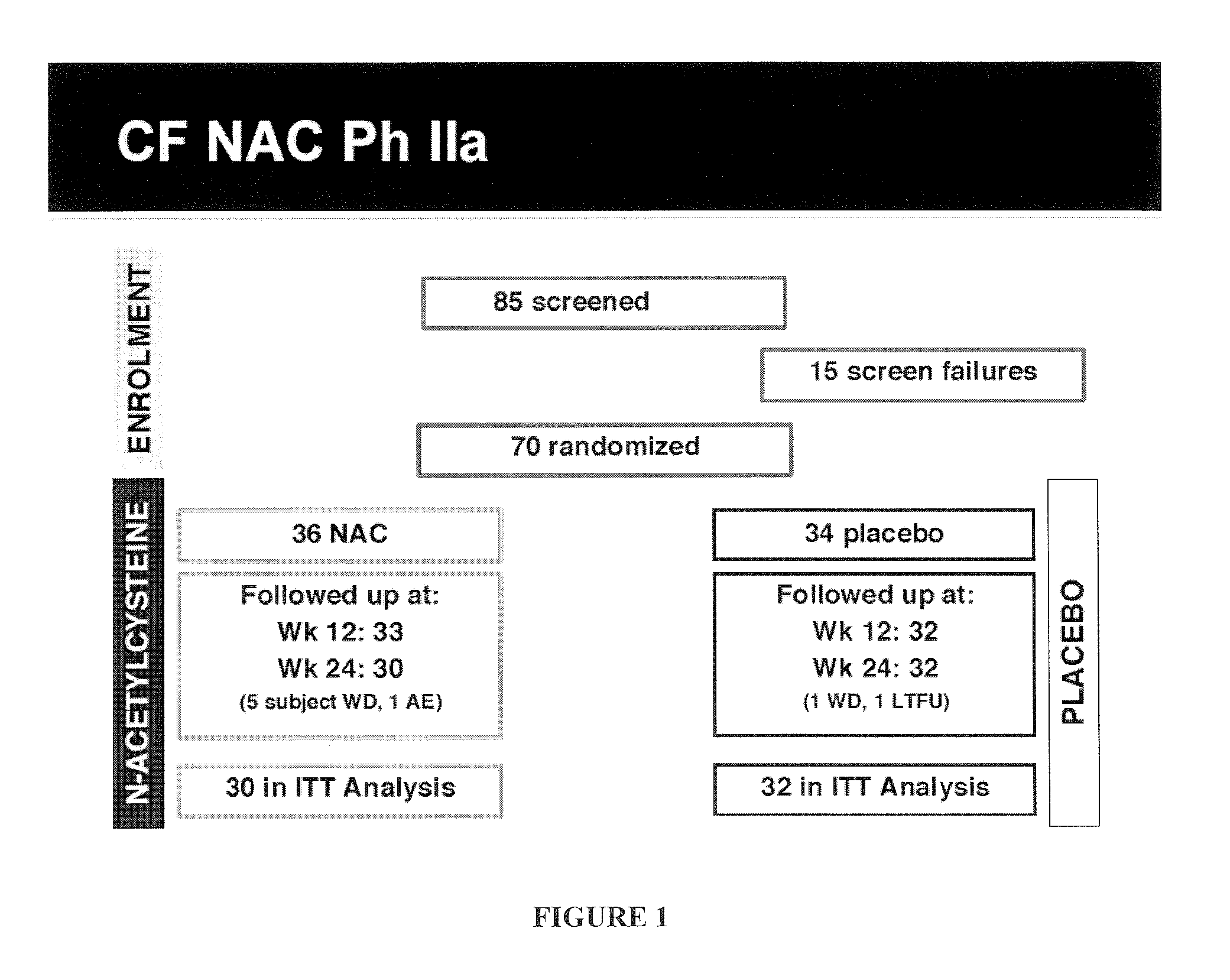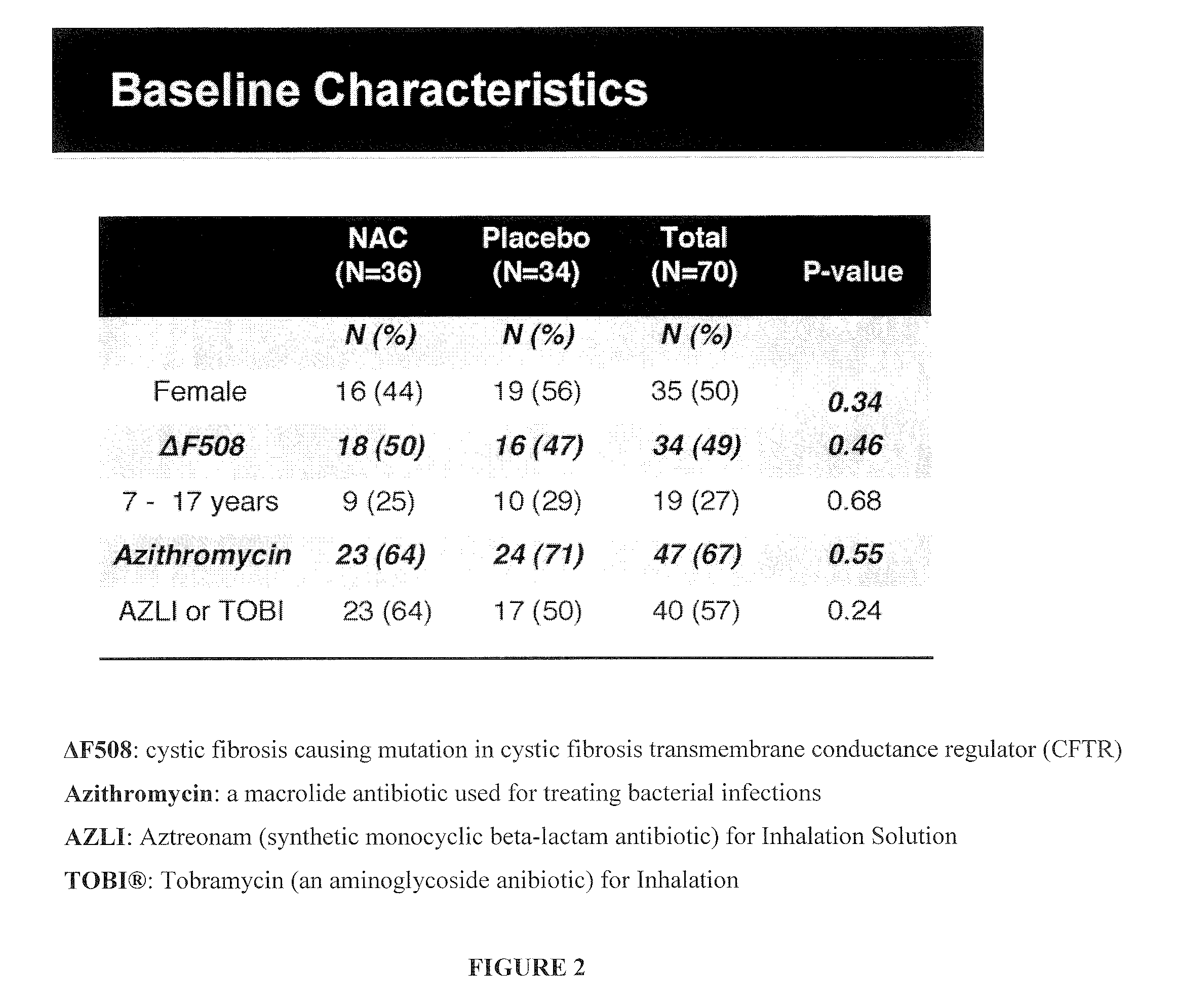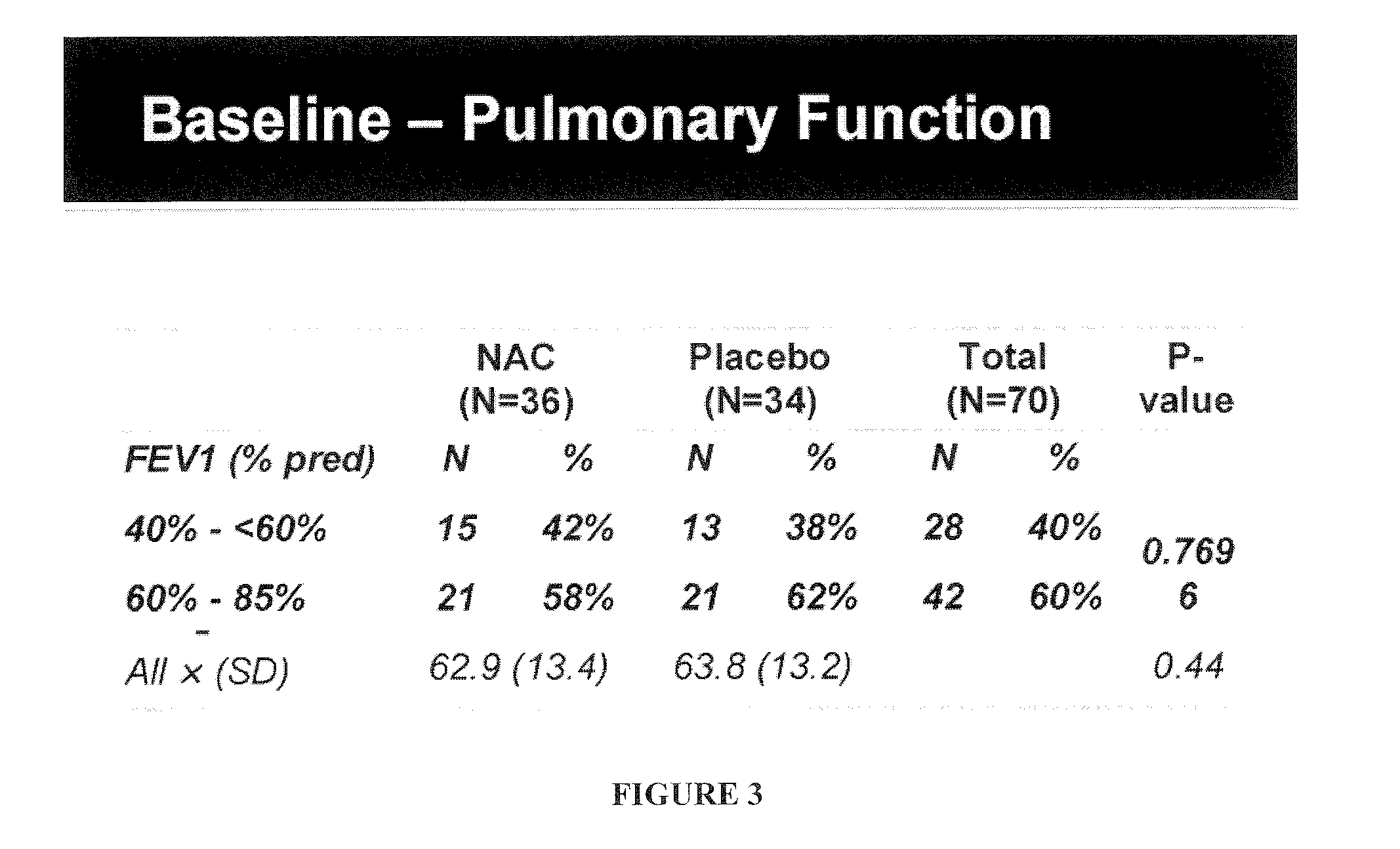Methods of improving or preserving lung function in a patient with a pulmonary disorder
a technology of nacetylcysteine and lung disease, which is applied in the direction of biocide, drug composition, peptide/protein ingredients, etc., can solve the problems of widespread biochemical damage within the cell, and high toxic free radical production, so as to avoid oxidation, and improve or preserve lung function
- Summary
- Abstract
- Description
- Claims
- Application Information
AI Technical Summary
Benefits of technology
Problems solved by technology
Method used
Image
Examples
example 1
Randomized, Placebo-Controlled, Double-Blind Study of the Effects of Oral N-Acetylcysteine On Redox Changes And Lung Inflammation In CF Patients
[0147]A 24-week (6-month) multi-center large clinical trial was designed with randomization stratified to improve balance of baseline characteristics between treatment groups, and to improve precision between group treatment effects.
[0148]A 6-month multi-center phase II clinical trial was performed to evaluate the effect of N-acetylcysteine (PharmaNAC®, BioAdvantex Pharma, Missisauga, Ontario Canada)) 900 mg effervescent tablets taken orally 3 times a day on airway inflammation in CF patients. 70 subjects were randomized to placebo or study drug. Randomization was stratified by study site, baseline FEV1, age, gender, chronic azithromycin, inhaled aztreonam for inhalation solution (AZLI) or tobramycin inhalation solution, USP (TOBI®, Novartis) and ibuprofen use. A cohort of 16 subjects served as an initial safety cohort.
[0149]General objectiv...
example 2
Effect of NAC On Chronic Airway Inflammation
[0155]The effect of NAC on chronic airway inflammation was measured by examining the change in the log10 of neutrophil elastase activity measured in sputum from enrollment to the end of the trial. The effect of NAC on neutrophil recruitment, lung function, pulmonary and sinus exacerbations, and on weight of CF subjects was measured by: change in the sputum neutrophil count, change in IL-8 in sputum and plasma, change in GSH in whole blood, incidence of pulmonary exacerbations, number of and time to first pulmonary exacerbation, incidence and number of antibiotics for any reason, and change in FEV1. Patient-reported outcomes (PRO) were measured by the CFQ-R and CFRD instruments.
[0156]No difference was detected in airways inflammation, measured by HNE (FIG. 5), number of pulmonary or sinus exacerbations, or new antibiotic prescriptions. But, NAC recipients maintained lung function over the 6-month period, while placebo recipients experienced...
example 3
Effect of Long-Term Treatment With NAC
[0157]Effect of long-term treatment with NAC in promoting the development of pulmonary hypertension (PH) in subjects with cystic fibrosis is examined. A panel of clinical and molecular studies, performed at 6-week intervals, is assessed. This panel included level of NAC in blood, bFGF and VEGF in plasma and urine, and in the initial safety cohort, levels of S-nitrosylated NAC, HIF-1α, and ECHO and diffusing capacity of the lung for carbon monoxide (DLCO).
PUM
| Property | Measurement | Unit |
|---|---|---|
| Forced Expiratory Volume | aaaaa | aaaaa |
| pharmaceutical composition | aaaaa | aaaaa |
| time | aaaaa | aaaaa |
Abstract
Description
Claims
Application Information
 Login to View More
Login to View More - R&D
- Intellectual Property
- Life Sciences
- Materials
- Tech Scout
- Unparalleled Data Quality
- Higher Quality Content
- 60% Fewer Hallucinations
Browse by: Latest US Patents, China's latest patents, Technical Efficacy Thesaurus, Application Domain, Technology Topic, Popular Technical Reports.
© 2025 PatSnap. All rights reserved.Legal|Privacy policy|Modern Slavery Act Transparency Statement|Sitemap|About US| Contact US: help@patsnap.com



